A small block of mass 1 kg is a circular are of ratius 40 m . The block sides along the track without topping and a frictionnal force acts on it in the direction opposite in the instrmens velocity . The work done in evercoming the friction up to the point Q as shown is the figure below is 150J
(Take the acceleration due to gravity g=10ms−2)

The magnitude of the normal reaction that acts on the block at the point Q is
7.5 N
8.6 N
11.5 N
22.5 N
The correct Answer is:A
Step by step video & image solution for A small block of mass 1 kg is a circular are of ratius 40 m . The block sides along the track without topping and a frictionnal force acts on it in the direction opposite in the instrmens velocity . The work done in evercoming the friction up to the point Q as shown is the figure below is 150 J (Take the acceleration due to gravity g = 10 ms^(-2)) The magnitude of the normal reaction that acts on the block at the point Q is by Physics experts to help you in doubts & scoring excellent marks in Class 12 exams.
Topper's Solved these Questions
- BOOK - JEE ADVANCED PREVIOUS YEARCHAPTER - JEE ADVANCEDEXERCISE - PART I: PHYSICS Section-3:(Matching List Type)2videos
JEE ADVANCED
- BOOK - JEE ADVANCED PREVIOUS YEARCHAPTER - JEE ADVANCEDEXERCISE - SECTION - 1 (ONE OR MORE THAN ONE OPTIONS CORRECT TYPE)10videos
JEE ADVANCED
- BOOK - JEE ADVANCED PREVIOUS YEARCHAPTER - JEE ADVANCEDEXERCISE - PART I: PHYSICS SECTION-3: (Paragraph Type)1videos
JEE ADVANCED
- BOOK - JEE ADVANCED PREVIOUS YEARCHAPTER - JEE (ADVANCE) 2020EXERCISE - SECTION 36videos
JEE (ADVANCE) 2020
- BOOK - JEE ADVANCED PREVIOUS YEARCHAPTER - JEE ADVANCED 2020EXERCISE - SECTION-36videos
JEE ADVANCED 2020
Similar Questions
Match List I of the nuclear processes with List II containing parent nucleus and one of the end products of each process and then select the correct answer using the codes given below the lists :
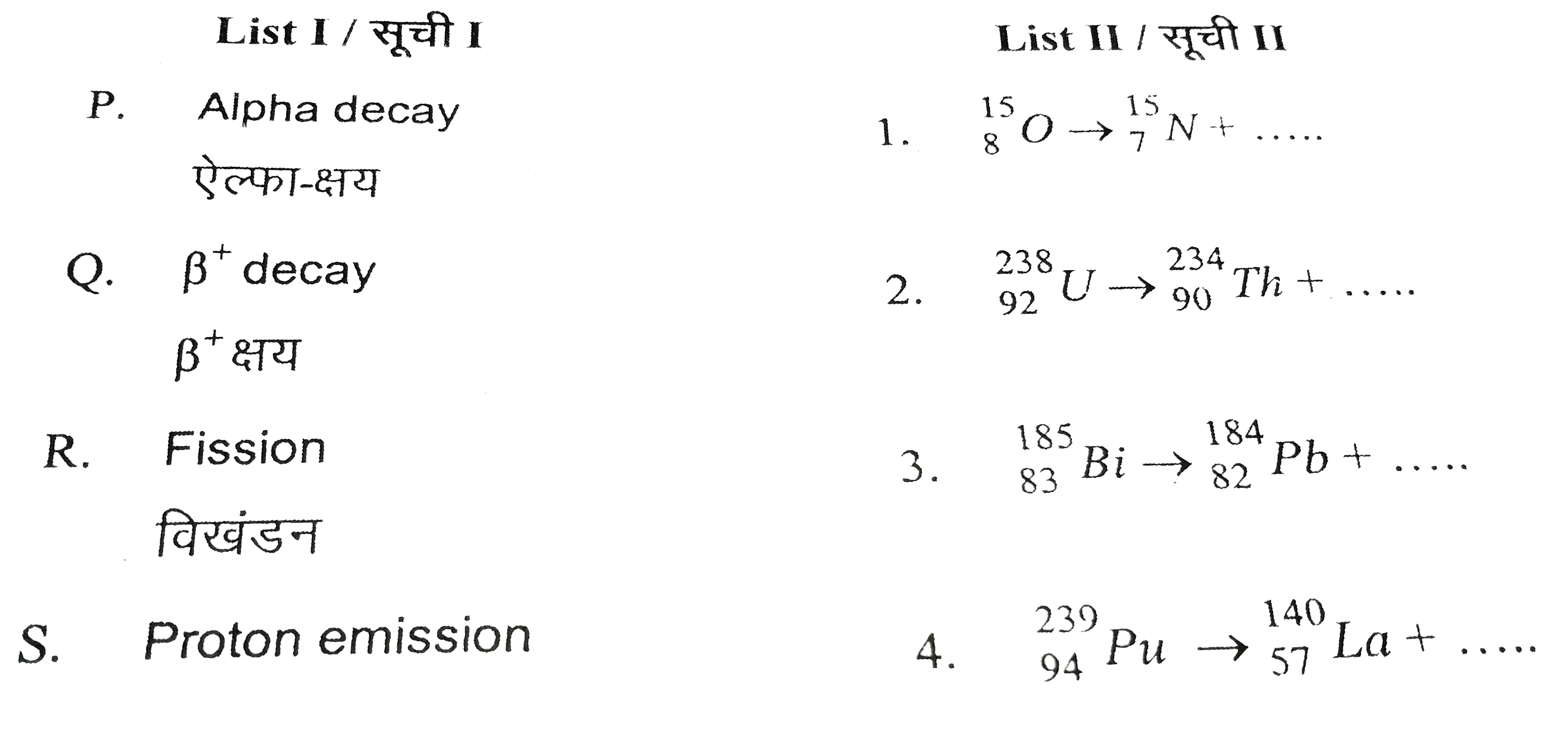 04:56View Solution
04:56View SolutionAt time t=0, terminal A in the circuit shown in the figure is connected to B by a key and an alternating current I(t)=I0cos(ωt), with I0=1Aand(ω)=500rads−1 starts flowing in it with the initial direction shown in the figure. At t=(7π/6ω), the key is switched from B to D. Now onwards only A and D are connected. A total charge Q flows from the battery to charge the capacitor fully. If C=20(mu)F, R = 10(Omega) and the battery is ideal with emf of 50 V, identify the correct statement(s).
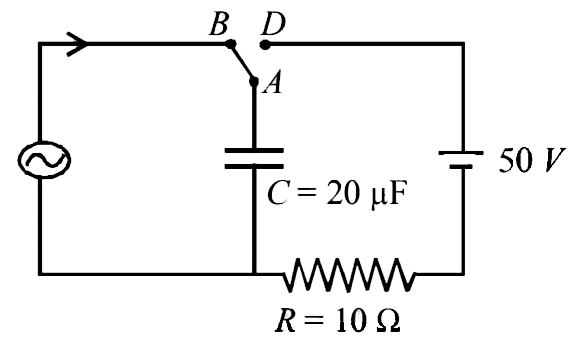 .01:48View Solution
.01:48View SolutionA point charges Q is moving in a circular orbit of radius R in the x-y plane with an angular velocity ω. This can be considered as equivalent to a loop carrying a steady current Qω2π. S uniform magnetic field along the positive z-axis is now switched on, which increases at a constant rate from 0 to B in one second. Assume that the radius of hte orbit remains constant. The application of hte magnetic field induces an emf in the orbit. The induced emf is defined as the work done by an induced electric field in moving a unit positive charge around a closed loop. It si known that, for an orbiting charge, the magnetic dipole moment is proportional to the angular momentum with a porportionality constant λ.
The charge in the magnetic dipole moment associated with the orbit. at the end of the time interval of hte magnetic field charge, is03:37View SolutionA spherical bubbles inside water has radius R . Take the pressuere in the bubbled and the water pressure to be pv. The bubble now gets compressed radially in an adiabatic manner so that its raduis becomes (R - a) . For a<<R the magnitude of the work done in the process is given by (4πpoRa2)X. where X is a a constant and y=Cp/Cv=41/30. The value of X is
06:06View SolutionPut a unifrom meter scale horizontally on your extended index fingers with the left one at 0.0 cm and the right one at 90.00 cm when you attempt to move both the fingers slowly towards the center , initially only the left finger slips with respect to to the scale and the right finger does not . after some distance, the left finger stops and the right one starts slipping . Then the right finger stops at a distance XR from the center (50.00 cm ) of the scale and the left one starts slopping again . This happens because to the difference in the fiictional forces on the two fingers . it the coefficients of static and dynamic between the fingers and the scale are 0.4 and 0.32 respectively , the value of XR (in cm is ...........
03:47View SolutionA small block of mass 1 kg is a circular are of ratius 40 m . The block sides along the track without topping and a frictionnal force acts on it in the direction opposite in the instrmens velocity . The work done in evercoming the friction up to the point Q as shown is the figure below is 150 J (Take the acceleration due to gravity g = 10 ms^(-2)) The magnitude of the normal reaction that acts on the block at the point Q is
03:51View SolutionA small block of mass 1 kg is a circular are of ratius 40 m . The block sides along the track without topping and a frictionnal force acts on it in the direction opposite in the instrmens velocity . The work done in evercoming the friction up to the point Q as shown is the figure below is 150 J (Take the acceleration due to gravity g = 10 ms^(-2)) The speed of the block when it reaches the point Q is
04:50View SolutionA block of mass 5 kg is pulled along a horizontal. The friction coefficient between the block and the surface is 0.5 . If the block travels at constant velocity, find the work done by this applied force during a displacement 4 m of the block.
04:29View SolutionA block of mass 1 kg is placed at the point A of a rough track shown in the figure. If slightly pushed towards right, it stops at the point B of the track. The work done by the frictional force on the block during its transit from A to B is
05:18View SolutionIf the mass of block is 1 kg and a force of 10 / sqrt3 N is applied horizontally on the block as shown in the figure . The frictional force acting on the block is :
02:32View SolutionA block of mass 10 kg is moving on a rough surface as shown in figure. The frictional force acting on block is :-
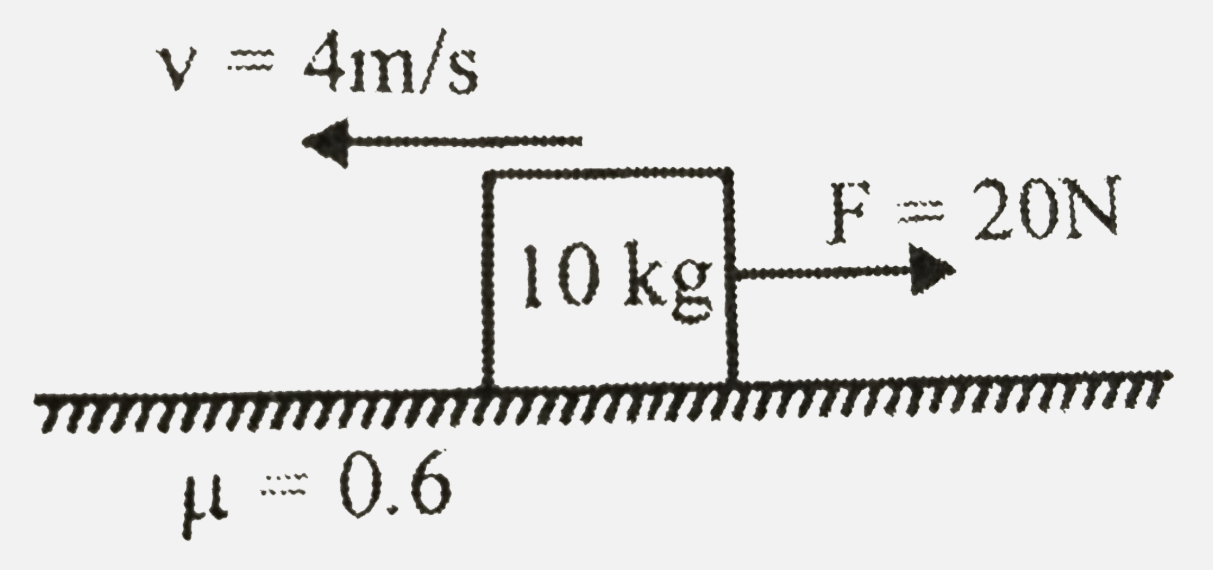 04:16View Solution
04:16View SolutionA small block of mass m slides along a smooth frictional track as shown in the figure. If it starts from rest at P, what is the resultant force acting on it at Q?
01:44View Solutionएक रुक्ष पृथ के उच्चतम बिन्दु से 1 किग्रा द्रव्यमान के गुटके को विरामावस्था से छोडा जाता है। यह पथ 40 मी त्रिज्या का वृत्तीय चाप है। गुटका अपने पथ पर बिना लड़के हुए सरकता है। इस गुटके पर एक घर्षण बल तात्क्षणिक वेग की विपरीत दिशा में लगता है। चित्र में दर्शाए गए अनुसार , बिन्दु O तक आने के लिए घर्षण को अतिक्रम करने के लिए 150 जूल कार्य करना पड़ा है। (गुरुत्वीय त्वरण g=10मी/से2 लीजिए)
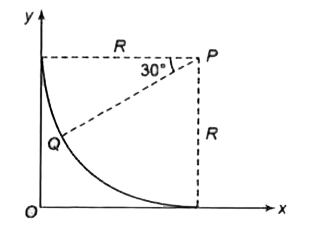 .
.
जब गुटका बिन्दु Q पर पहुँचता है , इसकी गति है05:18View Solutionएक खुरदरे पथ के शीर्ष से 1kg द्रव्यमान के एक गुटके को विरामावस्था से छोड़ा जाता है । यह पथ 40m त्रिज्या का वृत्तीय चाप है । गुटका अपने पथ पर बिना पलते खिसकता है । इस गुटके पर एक घर्षण बल तात्क्षणिक वेग की विपरीत दिशा में लगता है। चित्र में दर्शाये अनुसार Q तक आने के लिए घर्षण को अतिकर्म करने के लिए 150J कार्य करना पड़ता है। (गुरुत्वीय त्वरण g का मान = 10ms−2 लीजिये)
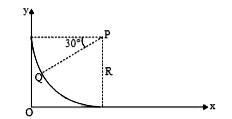
बिंदु Q पर, गुटके पर लगने वाले अभिलम्ब प्रतिक्रिया का परिमाण है01:49View SolutionA block of mass m is released along a smooth track shown in figure from its top point. Find the word done by gravity during its downward motion to the bottom of track.
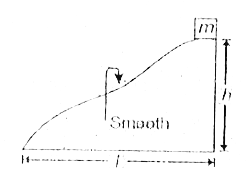 02:46View Solution
02:46View SolutionA block of mass 6 kg is kept on rough surface as shown in figure. Find acceleration and friction force acting on the block. (Take g=10m//s^(2) )
01:42View Solution

